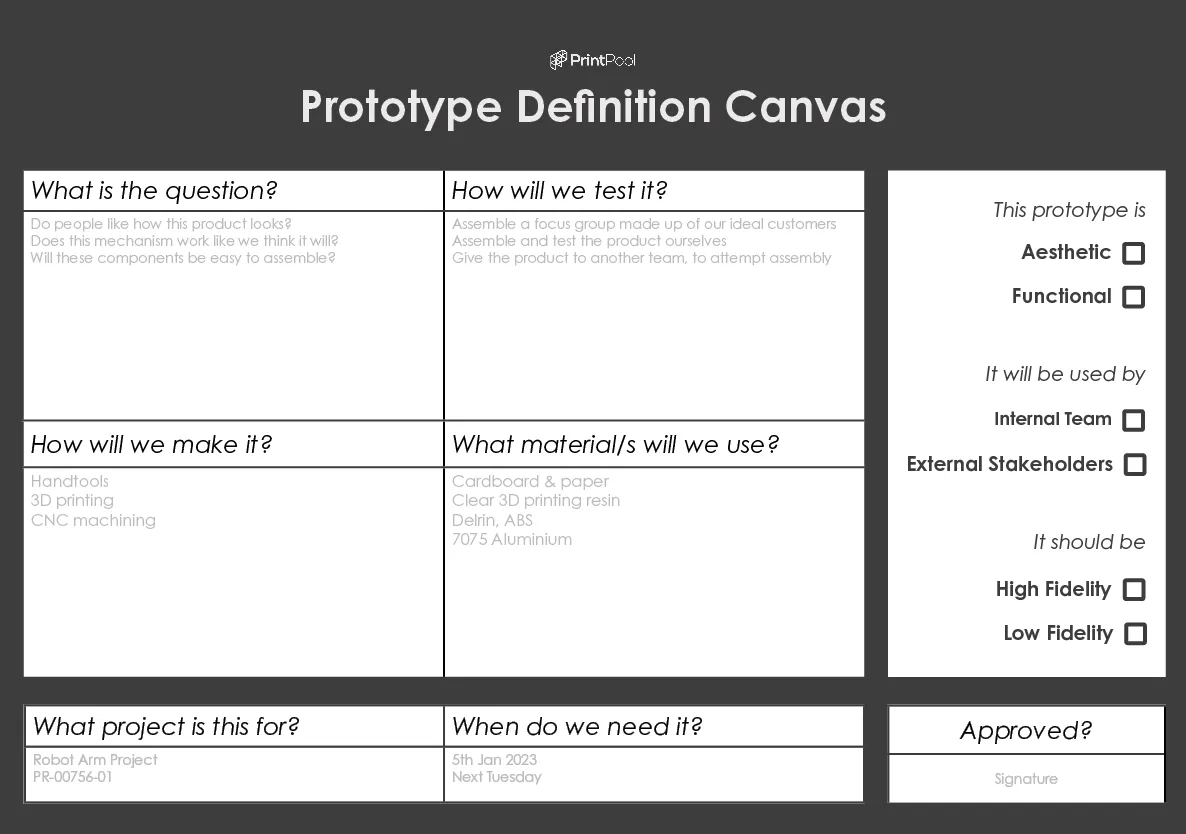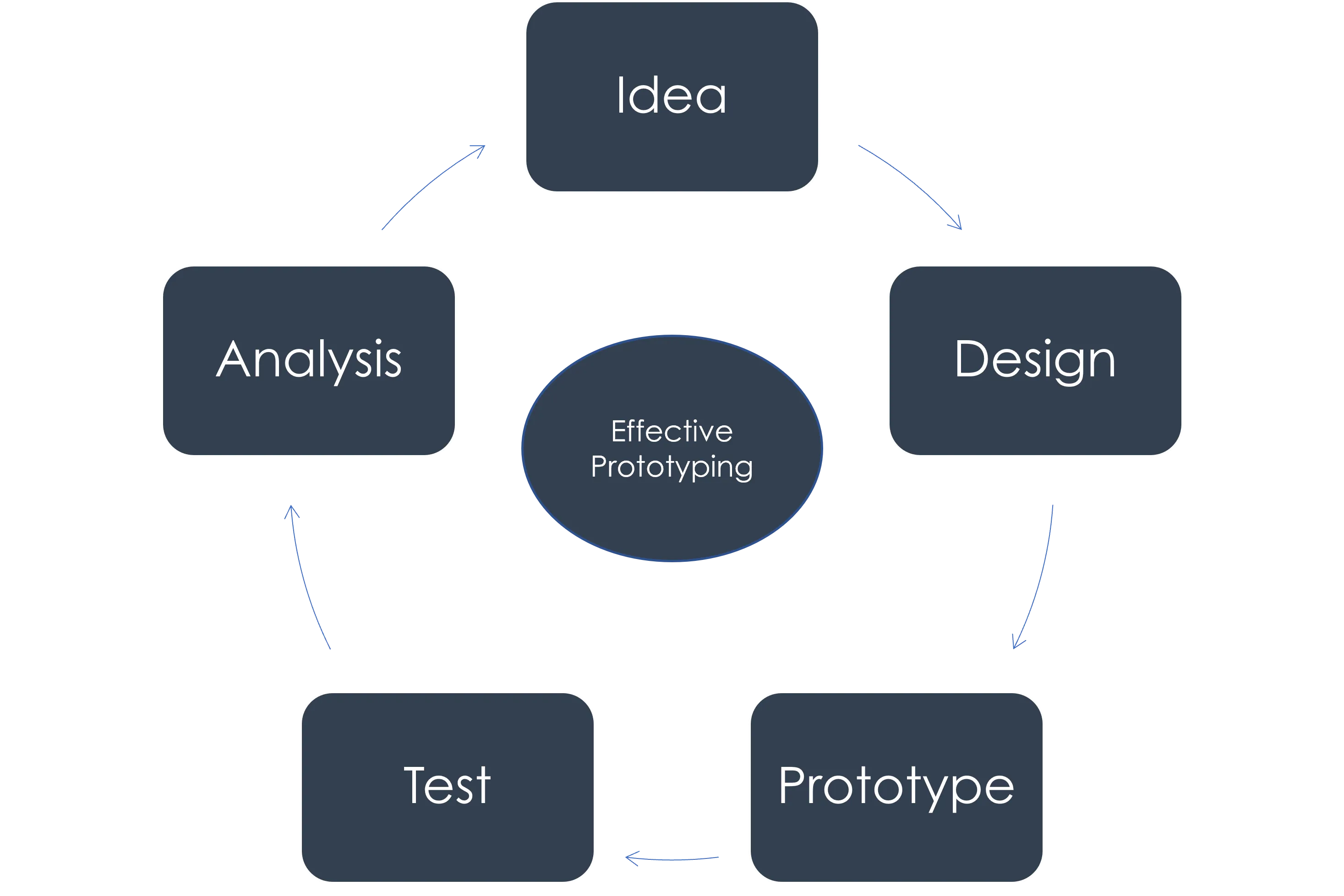Learn how to improve your prototyping by carefully considering and documenting each step using our free prototyping tools.
< Back to articles
Product development is hard. Creating new technology, products and services is complicated, and involves a lot of hard-won experience, and many different types of expertise to be successful. Even with all this expertise and collaboration, it is completely impossible to create a perfect final product, first time. That is why we use prototypes.
Its a big cliché to start this type of article with etymology, but in this case its actually quite interesting, so we'll make an exception. The word prototype has evolved from two Greek words: 'prōtos', meaning original or primitive, and 'typos' meaning form or impression. Both 'first impression', and 'original form' are excellent ways to think of a prototype. Clever Greeks.
The reason that we use prototypes is that building a final product is hugely expensive and time-consuming. If we are going to commit to building thousands of units of a product or component, then we had better be pretty sure that it works how we expect it to, and that there is a real demand for it. Otherwise, what once seemed like the next big thing can morph into a costly mistake.
Often, it can be tempting, particularly for inexperienced designers, to skip the prototyping stage. This is because CAD software is such a powerful design tool, especially when combined with photorealistic rendering, that the product already feels real, and stopping to make a model can seem like a waste of time. This could not be further from the truth.

A common misconception is that only one prototype is needed per part/component. Instead, prototyping should be thought of more as an iterative process. This approach is very typical in the software world, where it is used to great effect, but the world of hardware development lags behind a little. Multiple prototyping cycles should be used at each stage of product development to ensure that a great product is being created.
Getting feedback from your target customer, in the case of consumer goods, or the end-user in other forms of design, is critical to producing a useful product. A prototype can be used in focus groups, discussions and trials to demonstrate to the user how your design can solve their problems. If it turns out that they don't like it, or can't use it, changes can be made early in the design process to save money being wasted. If they do like it however, its not unusual to get some pre-orders based on prototype alone!
It's not just external stakeholders and potential customers that can benefit from interacting with a prototype. Often, discussing a design with a prototype in-hand can help you communicate your vision for a design, and make sure that everyone is one the same page about its size, shape and function.
Until you have seen, touched and interacted with your design, you won't truly understand its features and possible flaws.
Seeing a model is a range of different colours and materials can be very useful for both your design team and the final user in the early discovery phases of a project. A design that doesn't work well in black ABS may be perfect in brushed aluminium.
Towards the end of the design process, the primary purpose of producing a prototype shifts away from defining what the product should be, towards ensuring that the parts you have designed fit together well, and function as intended. This is especially important for parts that will go on to be injection moulded, as tooling costs can be huge, and a small mistake can be very expensive.
Never send a design for a production run before you have seen a prototype of the design and signed it off as complete, no matter how many digital renderings and design reviews it has been through.
Every prototype is the answer to a question. Often however, the engineers and designers that want these prototypes aren't very clear about what the question actually is. Common questions that a prototype could answer are:
or more specifically:
Some prototypes may need to answer multiple questions, and others only one. Often however, the designer doesn't have a clear, ideally written, statement to define this. And they should!
We've created a useful prototyping tool that can support you with this during your design process: The Prototype Definition Canvas. This is a user friendly, simple resource that can be used to document your prototyping intent.

By filling in the canvas, you and/or your team will get a clearer picture of what you are trying to achieve with your prototype. It is also a very useful way to communicate between teams, or with your prototyping partners, about what the most important aspects of the design are, and how to prioritise and balance cost, functionality, quality and turnaround time.
The PDF version can be downloaded for free on our resources page.
For a long time, 3D printing and rapid prototyping meant the same thing. As the technology has advanced in recent years however, and end-use parts have been made with additive manufacturing techniques with increasing frequency, the term 'rapid prototyping' has been used less and less. The companies that make the machines don't like to use such limiting language, and frankly, neither do we. Additive manufacturing is capable of much more, and fully functional 3D printed components are now flying above our head in aeroplanes, supporting our bodies in customised medical devices, and even under our feet, in bridges and construction projects.
The fact remains however, that in 2022, despite all these other wonderful uses, over half of the 3D prints that were produced globally this year were prototypes. The reason for this is simple; 3D printing was and is the ultimate prototyping tool.
3D printing excels at producing small numbers of complex objects, very quickly, which is exactly what is needed for a good prototype. Designers and engineers can easily finish a design on a Friday afternoon and be testing it on Monday morning. Its even possible to 3D print smaller components in just a few hours, making six or seven iterations of a new design per week achievable. More iterations mean more opportunities to improve the design.
At Printpool we can help you make effective, high-fidelity prototypes that will answer the right questions. We have a wide range of materials and services that will ensure you get what you need, first time.